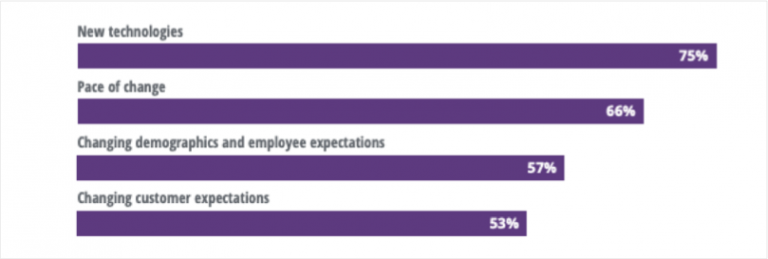The One Thing Holding You Back from Making It to the C-Suite
By: Jeff Bullas

According to a survey on leadership development conducted by the Brandon Hall Group, 77% of organizations are currently experiencing a leadership skills gap.
But you’re smart, qualified, and technically brilliant at what you do…
So what’s holding you back from the C-Suite?
It’s not a lack of ambition. After all, you’re ready, willing, and able to do whatever it takes to progress your career to the next level.
The issue is focus.
You’ve spent the bulk of your career to date focused on your hard skills. Learning, training, and implementing competency-based skills that enable you to perform at the highest standard in your role.
Unfortunately, training to master your trade isn’t the best preparation for becoming a leader.
The problem with being the best at your trade
In theory, there is nothing wrong with being the best at what you do…
In fact, traditionally, being the best performing person in any particular role is what would propel you into a leadership position.
Being highly skilled at something is admirable. It shows discipline, desire, and an appetite for improvement.
The problem is due to the narrow focus it requires to reach mastery. In Malcolm Gladwell’s best-selling book, Outliers, he discusses the concept of the “10,000-Hour Rule”. The idea is that to achieve true mastery and success in a field, you need to work on that exact skill for 20 hours a week over a 10-year period—equating to 10,000 hours.
If you dedicate 10,000 hours to your trade, in an attempt to become the best, how do you have time to grow into a leader?
Because, there are very few ‘natural’ leaders—they are a once in a generation type person. You can’t rely on the hope that some innate ability will help you inspire, motivate, and provide direction to, a group of people all with different goals and agendas.
Leadership is a skill, not a talent. It requires discipline, learning, and repetitive application to reach mastery, just like any other skill.
The trap that many technical specialists fall into is all about focus. Your view of the world is granular and highly target, rather than being big picture and broad—something that is required to be a great leader.
You also have a default response to challenging situations, which is to do everything yourself. Leaders enable others to achieve more than they ever could as an individual. They surround themselves with smart people and empower them to achieve technical brilliance. They don’t do all of the work themselves.
Why does a leadership skills gap exist?
The leadership skills gap is a complex and deeply embedded issue. It’s not something that has happened overnight but has been developing for decades.
There are four key driving forces:
- The hierarchical nature of business. Due to the traditional hierarchy in most businesses, there is only one way to move into a leadership role – by being the most apt at your non-leadership role and making your way up the hierarchy.
- Tenure required to move into leadership. Leading on from the above point about hierarchy, the bigger the organization, the longer it takes for someone to move into a leadership role. This means that those that are eventually placed in leadership roles have no idea whether or not they will take to it, because they’ve spent their whole career doing something else.
- The concept of specialization is one that drives growth in organizations. Rather than having a group of generalists, businesses develop experts in sales, engineering, logistics, and any other number of non-leadership skillsets. They don’t develop leaders.
- The changing workplace. We are also seeing a rapidly changing workplace. Deloitte’s 2019 Global Human Capital Trends report, found that there are four primary factors driving the unique requirements of 21st-century leaders:
In summary, corporations are trying to adapt to a new world of leadership with an outdated and archaic system. It simply isn’t working.
What can you do to buck the trend?
Whilst the leadership skills gap is complex, you have the opportunity to influence your own pathway.
Instead of accepting a narrow focus with your professional development agenda, make leadership a priority.
- Flex your leadership muscle outside of work through online training courses, extra-curricular activities, and community initiatives.
- Extend your leadership skills by taking an MBAthat emphasizes the importance of leadership skills.
- Enlist a mentor who has experience as a leader, learn from them, seek guidance, and have them hold you accountable to your leadership goals.
Are you ready to buck the trend and reduce the leadership skills gap?












